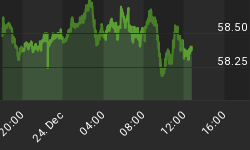Financial crises can happen quickly, like the bursting of the tech stock bubble in early 2000, or slowly, like the late-1980s junk bond bust. The shape of the crash depends mostly on the asset in question: Equities can plunge literally overnight, while bonds and bank loans can take a while to reach critical mass.
China's bursting bubble is of the second type. During its post-2009 infrastructure binge, trillions of dollars were lent to (way too many) producers of cement, steel, chemicals and other basic industrial inputs. And now a growing number of them can't make their payments:
China's Bond Stresses Mount as Two More Companies Flag Concerns
A Chinese fertilizer maker and a pig iron producer have flagged bond payment difficulties, adding to signs of stress in the nation's corporate note market after at least six defaults this year.Jiangsu Lvling Runfa Chemical Co., based in the eastern city of Suqian, is asking its guarantor to repay 53.1 million yuan ($8.3 million) in bond principal and interest due Dec. 4, according to a statement posted on Chinamoney's website. Sichuan Shengda Group Ltd., based in the southwestern province of Sichuan, is uncertain it can repay notes due in 2018 that holders can opt to sell back early on Dec. 5, it said in a statement on the same website Thursday.
More companies in China are struggling to repay bonds amid the worst economic slowdown in a quarter century. China Shanshui Cement Group Ltd. this month became at least the sixth company in 2015 to default on yuan-denominated domestic notes. State-owned steel trader Sinosteel Co. postponed a bond payment for a second time last week.
The guarantor of Jiangsu Lvling Runfa's bond is Jiangsu Re-Guarantee Co. The bonds are so-called collective notes, which are typically issued by several small- and medium-sized companies that don't have the ability to sell securities on their own. A filing earlier this week didn't specify the other issuers of the 6.2 percent notes that have a face value of 100 million yuan.
Bank of Tianjin Co., the trustee manager on Sichuan Shengda's notes, said it will hold a bondholder meeting on Dec. 3, according to a statement to Chinamoney Thursday. Sichuan Shengda's subsidiary's pig iron production is in halt because of falling prices and the cash shortage, the lender said in a separate statement.
Sichuan Shengda and its subsidiary had a total of 514.41 million yuan of overdue borrowings as of Nov. 25, according to Bank of Tianjin's statement.
The stress isn't limited to bonds. China Fishery Group Ltd. failed to repay a $31 million installment due earlier this month on a $650 million loan, according to Standard & Poor's. Creditor banks may have found it difficult to roll over the debt following a government investigation the company flagged in August, according to JPMorgan Chase & Co.
What happens next? In the standard script, defaults begin to snowball as companies unable to pay their off bonds, bank loans and supplier bills cause their creditors to either fail or scale back lending, which impairs other leveraged companies, and so on, until things get out of hand. Then the government either steps in and tries to bail out what's left of the market or stands aside and allows the bad debt to liquidate.
In actual capitalist societies, option number two is how unwise loans and "malinvestment" are liquidated to return the system to health. But lately everyone has been choosing option number one, which means socializing the private sector's debt by recapitalizing banks and borrowers with taxpayer funds. This averts a crisis in the moment while setting the table for an even bigger mess in the future.
It's a safe bet that China, following the developed world's lead, will soon toss a big chunk of its foreign exchange reserves at the problem. When this fails, the next steps include QE and negative interest rates, which take money from savers and retirees and give it to banks, again with the hope of moving the inevitable crash to some later date. The result? An even more highly-leveraged world and Potemkin markets that look real but no longer are.
















